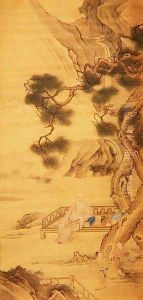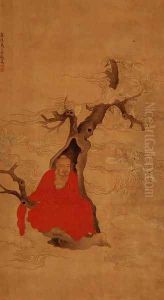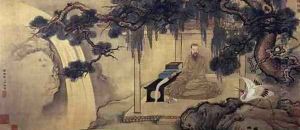Zhiding Yu Paintings
Zhiding Yu, also known as Yu Zhiding, was a prominent Chinese painter during the Qing Dynasty, particularly well-regarded for his portrait and figure paintings. Born in 1647, during a time of significant transition in China, Yu lived through the fall of the Ming dynasty and the establishment of the Qing dynasty, which was ruled by the Manchurian Aisin Gioro clan. Despite the political upheaval, Yu managed to achieve great success as an artist, thanks in part to his adaptability and talent.
Yu Zhiding was known for his mastery of the traditional Chinese brushwork, coupled with an ability to adapt to the aesthetic tastes of the new Manchu elite. He was especially skilled in the art of fine line (gongbi) painting, which is characterized by its meticulous brushwork and highly detailed representation. His works often featured historical figures, literati, and immortals, rendered with a sense of realism and individuality that was quite advanced for his time.
Yu's reputation was not limited to his skill as a painter; he was also known for his poetry and calligraphy, making him a well-rounded literati artist. His works were collected by the imperial court and the elite of Qing society, which was a testament to his proficiency and the high regard in which he was held. Yu Zhiding's influence lasted well beyond his lifetime, as he was often cited as a model for later Qing dynasty painters who sought to emulate his style and technical skill.
Despite his success as an artist, there is not a wealth of personal information available about Yu Zhiding's life beyond his professional accomplishments. He passed away in 1709, leaving behind a legacy that would inspire Chinese artists for generations. His works remain highly valued by collectors and are held in various museums and private collections around the world, continuing to be admired for their elegance and historical significance.



